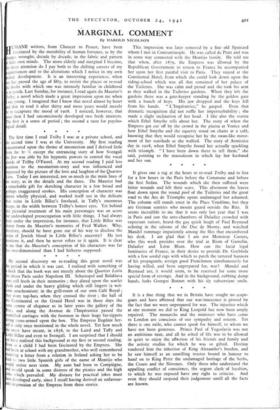The first time I read Trilby I was at a
private school, and second time I was at the University. My first reading ncentrated upon the theme of mesmerism and I derived little om the bc.—k except the entrancing story of how Svengali Jew was able by his hypnotic powers to control the vocal hords of Trilby O'Farrel. At my second reading I paid less ttention to the mesmerism-story and was influenced and pressed by the picture of the love and laughter of the Quartier atin. Today I am interested, not so much in the main lines of e story, as in the details and the dates. Du Maurier had remarkable gift for sketching character in a few broad and rhaps exaggerated strokes. His conception of character was host wholly physical, and worked itself out in the delicate ue veins in Little Billee's forehead, in Taffy's enormous ceps, in the width between Trilby's honest eyes. Yet behind s pictorial treatment of his main personages was an acute at undeveloped preoccupation with little things. I had always en under the impression, for instance, that Little Billee was awn from du Maurier's memories of Fred Walker. Why, refore, should he have gone out of his way to disclose the train of Jewish blood in Little Billee's ancestry? He just entions it, and then he never refers to it again. It is clear me that du Maurier's conception of his characters was far .ss two-dimensional than I had hitherto supposed.


























 Previous page
Previous page